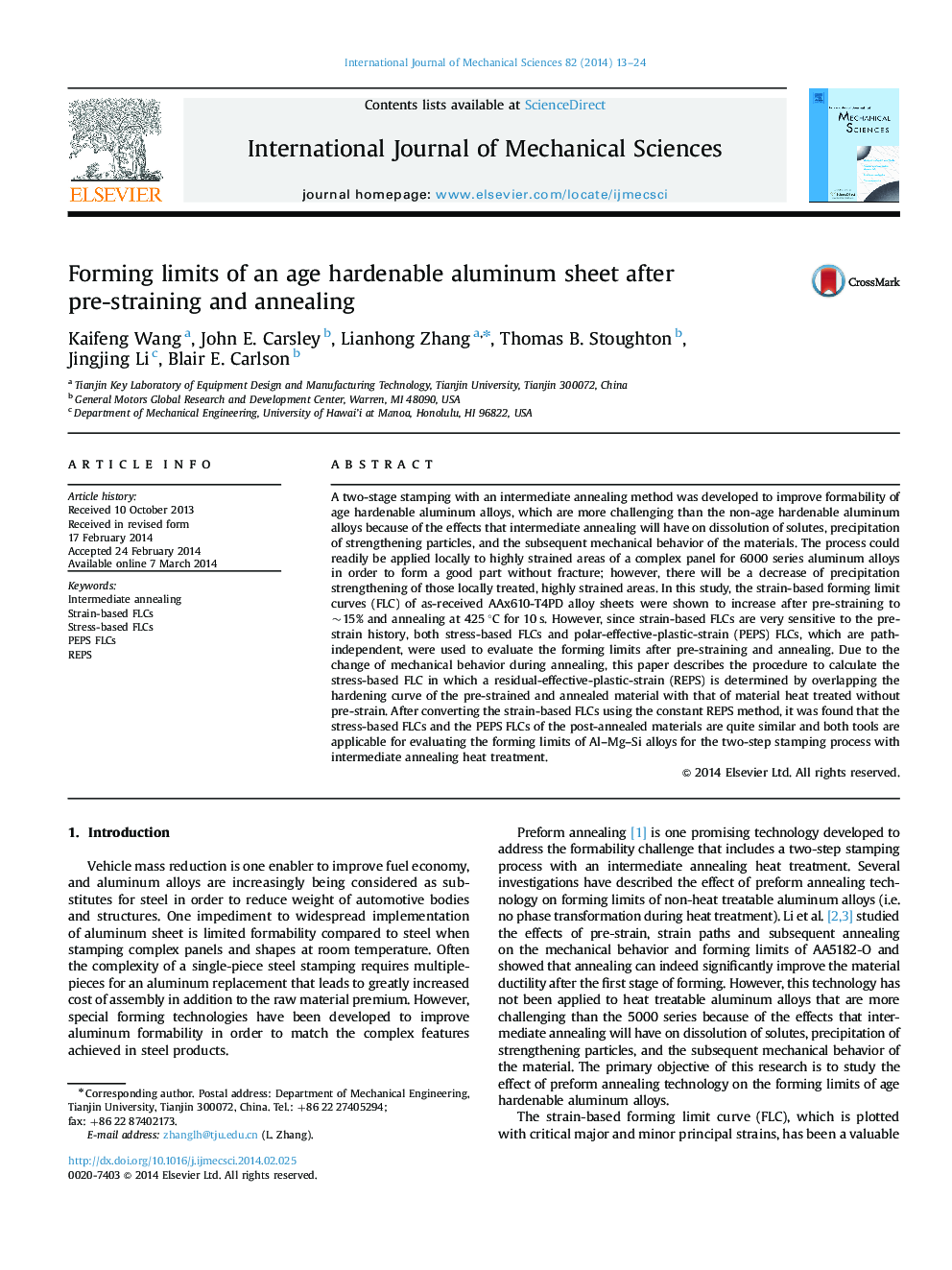| کد مقاله | کد نشریه | سال انتشار | مقاله انگلیسی | نسخه تمام متن |
|---|---|---|---|---|
| 783570 | 1464998 | 2014 | 12 صفحه PDF | دانلود رایگان |
• A two-stage stamping with intermediate annealing was studied.
• A decrease of precipitation strengthening occurred during annealing.
• A residual-effective-plastic-strain was used to account for the effect.
• Improved stress-based and polar-effective-plastic-strain FLCs were applicable.
A two-stage stamping with an intermediate annealing method was developed to improve formability of age hardenable aluminum alloys, which are more challenging than the non-age hardenable aluminum alloys because of the effects that intermediate annealing will have on dissolution of solutes, precipitation of strengthening particles, and the subsequent mechanical behavior of the materials. The process could readily be applied locally to highly strained areas of a complex panel for 6000 series aluminum alloys in order to form a good part without fracture; however, there will be a decrease of precipitation strengthening of those locally treated, highly strained areas. In this study, the strain-based forming limit curves (FLC) of as-received AAx610-T4PD alloy sheets were shown to increase after pre-straining to ~15% and annealing at 425 °C for 10 s. However, since strain-based FLCs are very sensitive to the pre-strain history, both stress-based FLCs and polar-effective-plastic-strain (PEPS) FLCs, which are path-independent, were used to evaluate the forming limits after pre-straining and annealing. Due to the change of mechanical behavior during annealing, this paper describes the procedure to calculate the stress-based FLC in which a residual-effective-plastic-strain (REPS) is determined by overlapping the hardening curve of the pre-strained and annealed material with that of material heat treated without pre-strain. After converting the strain-based FLCs using the constant REPS method, it was found that the stress-based FLCs and the PEPS FLCs of the post-annealed materials are quite similar and both tools are applicable for evaluating the forming limits of Al–Mg–Si alloys for the two-step stamping process with intermediate annealing heat treatment.
Journal: International Journal of Mechanical Sciences - Volume 82, May 2014, Pages 13–24
